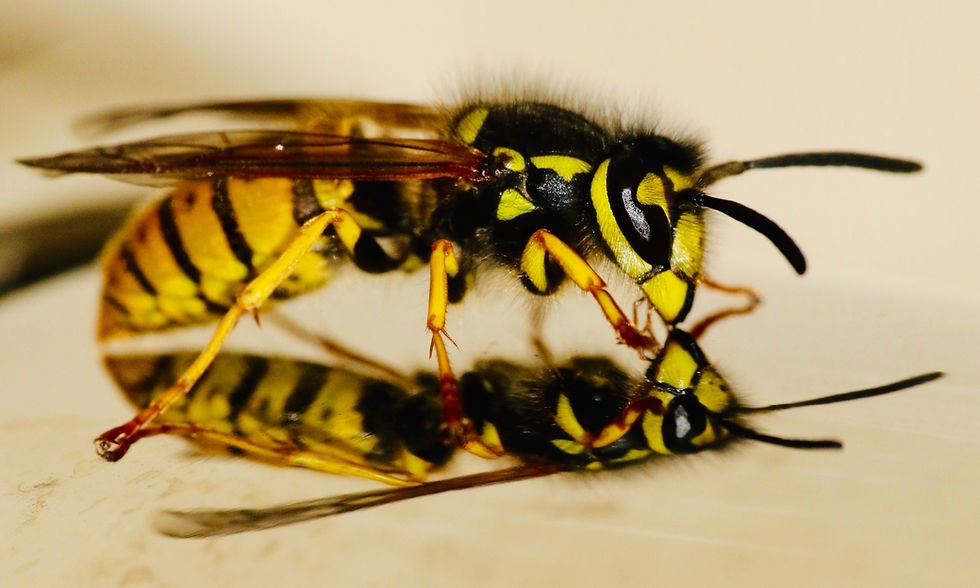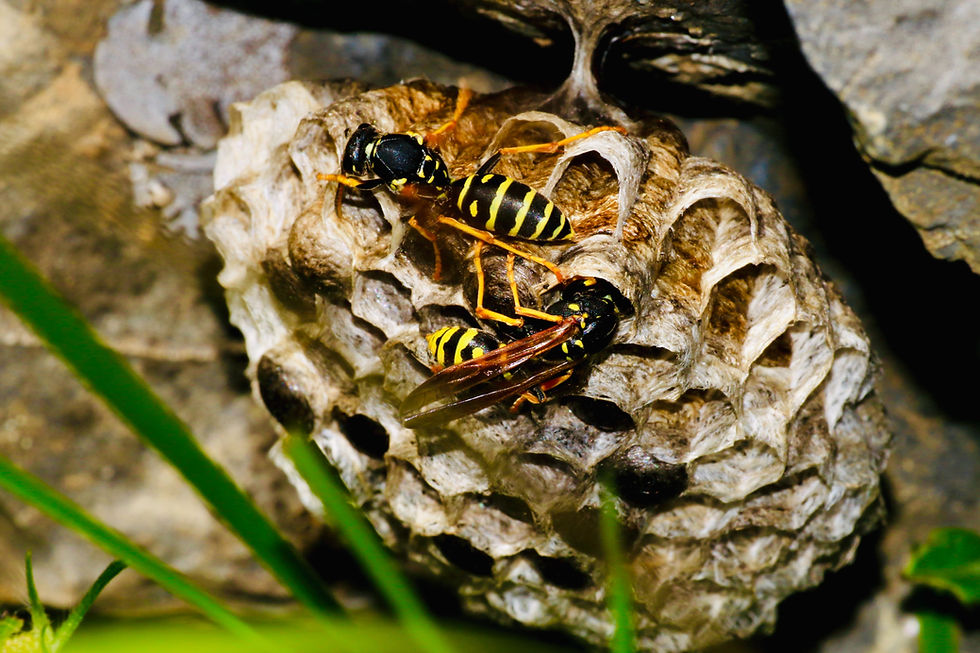Bee Identification
- greyzme
- Feb 3
- 3 min read
Updated: Jun 5
Honey Bees

Honey bees are small and can range in colour from golden brown to nearly black. They have large, furry eyes, a soft, fluffy chest (or thorax), and unique bent antennae.

When they settle in a swarm, they form a tight, distinctive cluster. If you think you've spotted a honey bee swarm, simply CLICK HERE for our swarm collector map. You can enter your postcode, and we’ll arrange to collect them. We’re also happy to offer advice and support if you're dealing with a honey bee swarm.
For safety reasons, we can’t collect swarms from places that might be dangerous for either you or us, such as hazardous environments. Please bear in mind that we’re generally unable to collect honey bees from roof spaces, cavity walls, or chimneys.
Bumble Bees

Bumblebees are often mistaken for honeybees, but they’re actually larger, rounder, and fluffier, with lovely colourful stripes at the end of their tails. You’ll often spot them in bird boxes, under decking, or in compost heaps, and they’re really important for pollination.
If you find a nest, it’s best to leave it be, as the bees will naturally die off by the end of summer and won’t cause any problems. Plus, bumblebees are pretty friendly and rarely sting, so there’s no need to worry about them.
If you notice bees in your soffits, gutters, air vents, or brickwork, they’re nearly always bumblebees and can safely be left alone. They’ll usually leave by late autumn, and after they’ve gone, you can seal up any entry points to stop them from returning. A simple net curtain hung at an open window can also help keep them out of the house.
There are 24 kinds of native bumblebees, and they all come in different sizes and colours. To find out more about bumblebees, check out the Bumblebee Conservation Trust website.
Solitary Bees


Are you noticing lots of tiny bees flying in and out of the wall or small holes in the ground? Do they have a reddish-brown bottom? Are they almost black?
What you’re seeing are solitary bees – there are over 240 species of them in the UK! As their name suggests, they don’t live in big colonies like honeybees. Instead, each female makes her own nest, although they might nest quite close together in large numbers. The good news is, they’re completely harmless to you, your family, and your pets. In fact, they’re really important pollinators and should be left to get on with their work. Their numbers will naturally start to drop off as the summer goes on, and their nests don’t need to be disturbed. Even if they’re in your lawn or around your home, they don’t cause any damage. Most of them only fly for a few weeks, so they’ll likely disappear on their own within a month. If you can, just let them be – they’ll carry on with their vital work and then move on.
Wasps

Wasps are slim insects with a narrow waist and shiny, colourful bodies, usually bright yellow with black stripes. They’re very smooth and typically have this yellow and black pattern.

If they're in the roof of your house or coming from a round nest, it’s likely you've found a wasp nest. Sometimes, they even set up shop in the shed.
Wasps also have a high-pitched buzz and tend to be attracted to all things sweet.

Social wasps are smaller and live in large groups, while hornets are bigger with a reddish-brown tint. Wasps have smooth stingers, so they can sting multiple times. If you spot one, just be cautious—they can get a bit feisty if they feel threatened!
For more buzzing bee facts, see more of our blog posts.




Comments